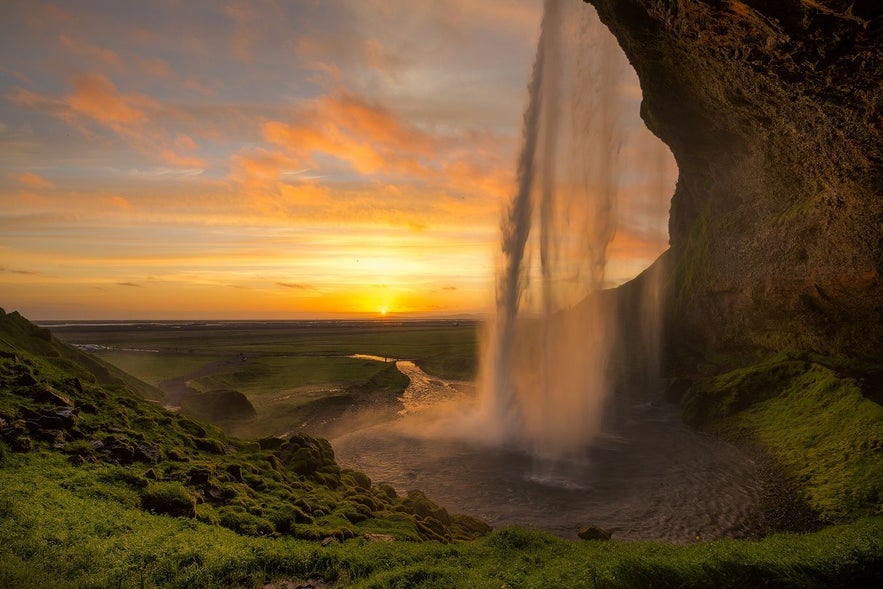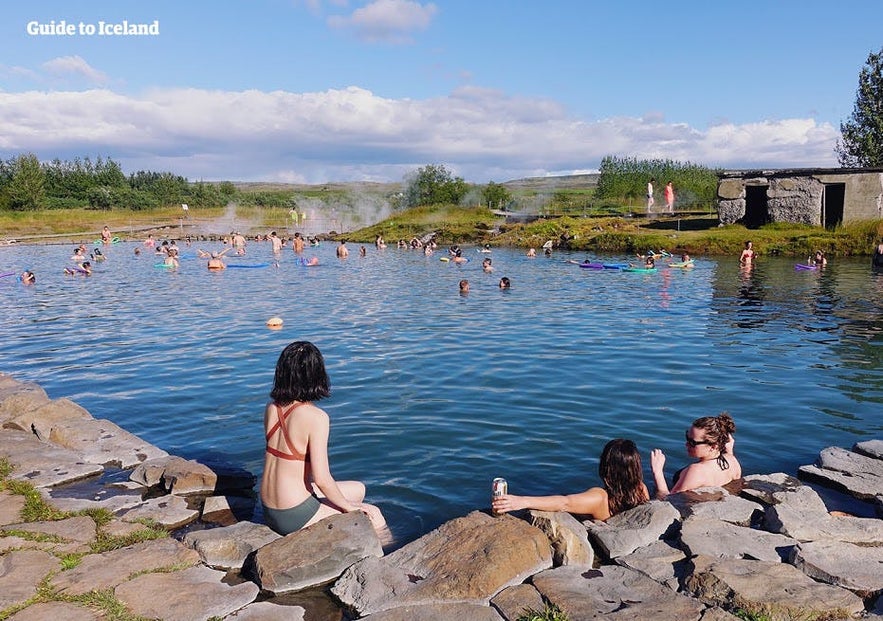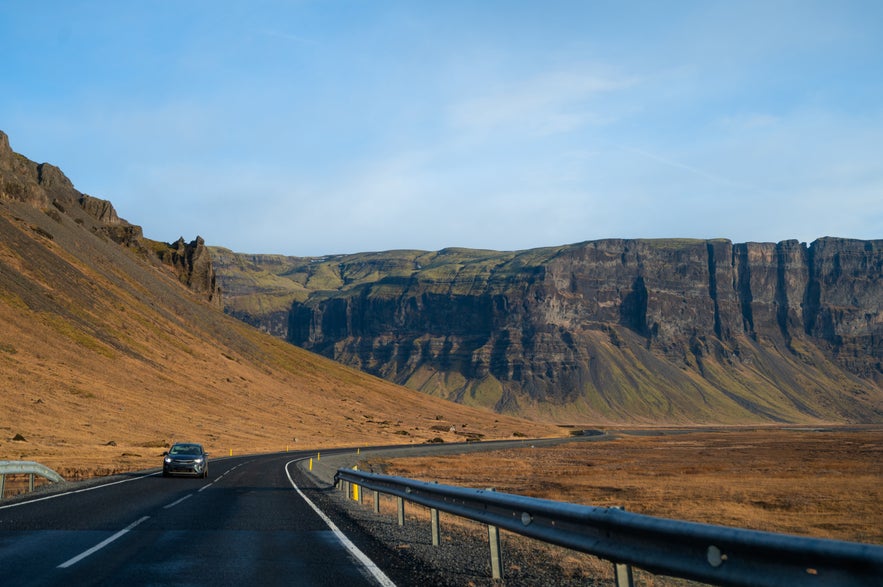Wondering why Iceland’s South Coast is one of the most popular destinations on the island? This epic mix of fire and ice is home to thundering waterfalls, black sand beaches, and sprawling glaciers—an unforgettable adventure waiting for you to explore.
Stretching from Reykjavik in the west to Vatnajokull National Park, the South Coast showcases Iceland’s natural beauty at its finest. It's easy to navigate the roads with a rental car, and guided South Coast tours are popular year-round, making it one of the best routes for first-time visitors and seasoned adventurers alike.
Why You Can Trust Our Content
Guide to Iceland is the most trusted travel platform in Iceland, helping millions of visitors each year. All our content is written and reviewed by local experts who are deeply familiar with Iceland. You can count on us for accurate, up-to-date, and trustworthy travel advice.
Curious about the best stops along the way? From glacial lagoons to volcanic beaches, we’ll guide you through must-see sights and essential travel tips to plan your perfect South Iceland adventure.
Key Takeaways
-
The South Coast is a must-visit region in Iceland with towering waterfalls, black sand beaches, massive glaciers, and volcanic terrain.
-
Self-drive and guided tours provide flexible ways to explore, whether you prefer the freedom of the open road or expert insights from local guides.
-
Iconic natural wonders like Seljalandsfoss, Skogafoss, the Jokulsarlon Glacier Lagoon, and Reynisfjara Beach showcase Iceland’s exceptional views.
-
Outdoor adventures abound, including glacier hiking, ice caving, horseback riding, and birdwatching—a paradise for nature lovers and thrill-seekers alike.
-
Wildlife spotting opportunities range from puffins nesting on cliffs to seals and whales along the coastline.
Exploring Key Locations on Iceland’s South Coast
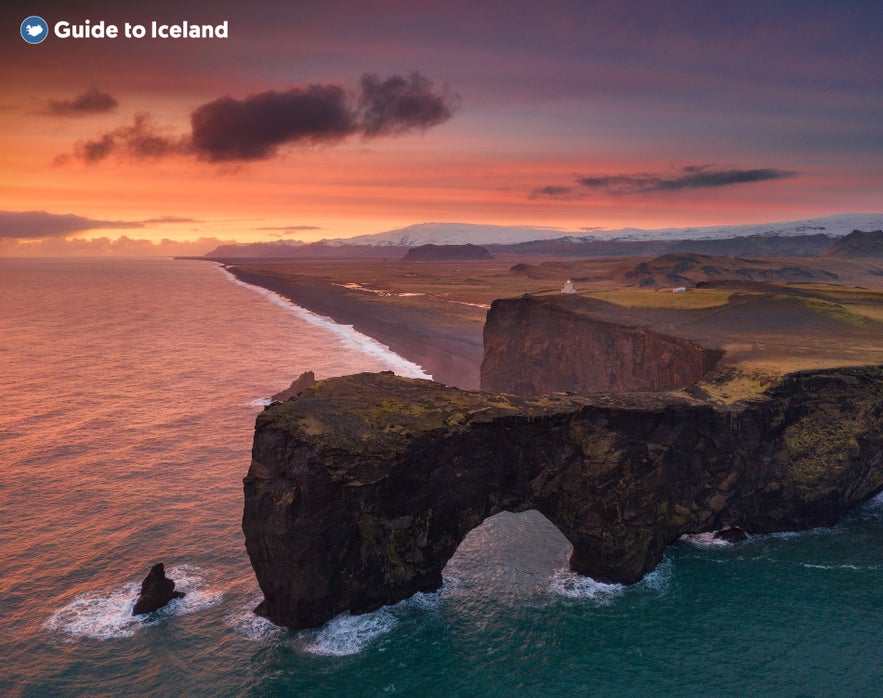 From towering waterfalls to glacial lagoons, th South Coast boasts unforgettable sights showcasing the country’s diverse landscapes. This stretch of the country is rewarding to explore, with each stop offering something unique—the raw power of a cascading waterfall, the striking contrast of black sand beaches, or the ever-changing formations of a glacier.
From towering waterfalls to glacial lagoons, th South Coast boasts unforgettable sights showcasing the country’s diverse landscapes. This stretch of the country is rewarding to explore, with each stop offering something unique—the raw power of a cascading waterfall, the striking contrast of black sand beaches, or the ever-changing formations of a glacier.
With so much to see along the South Coast driving route, it’s easy to customize your journey based on your interests. Nature lovers can explore canyons and cliffs, while those seeking adventure can hike across glaciers and venture into ice caves. Below is our list of must-visit attractions along the way.
The Golden Circle
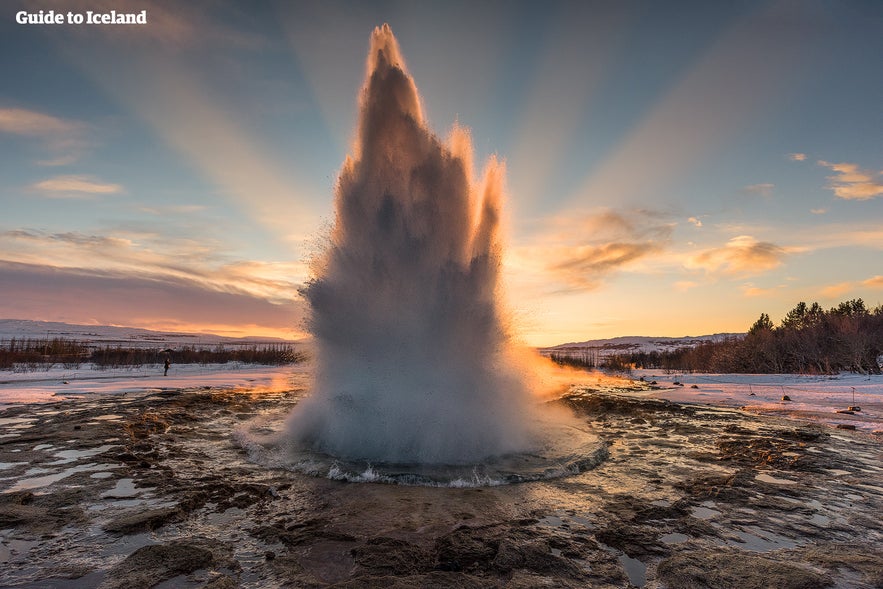
It’s an easy way to experience some of Iceland’s dramatic natural and historical sites before continuing along the coast.
Seljalandsfoss and Gljufrabui Waterfalls
Seljalandsfoss is one of South Iceland’s most photographed waterfalls, known for its unique walking path leading visitors behind the falling water. A short walk away, the lesser-known Gljufrabui Waterfall is hidden inside a moss-covered canyon, offering a magical, secluded experience.
Skogafoss Waterfall
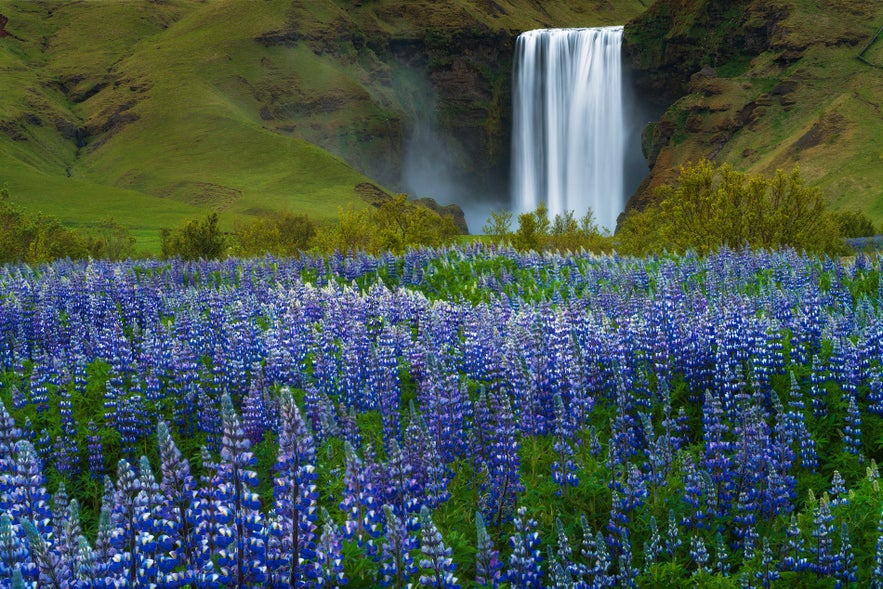 Just beyond Seljalandsfoss, Skogafoss Waterfall is one of Iceland's largest and most powerful waterfalls. If you climb the staircase next to the falls, you’ll be rewarded with panoramic views of the South Coast landscape and access to hiking trails leading into the Thorsmork Valley and the Highlands.
Just beyond Seljalandsfoss, Skogafoss Waterfall is one of Iceland's largest and most powerful waterfalls. If you climb the staircase next to the falls, you’ll be rewarded with panoramic views of the South Coast landscape and access to hiking trails leading into the Thorsmork Valley and the Highlands.
Solheimajokull Glacier
Solheimajokull is a striking glacier tongue extending from the Myrdalsjokull Glacier. It's one of the most popular locations in Iceland for glacier hiking tours. You'll be able to walk across ancient ice, explore crevasses, and marvel at otherworldly formations on experiences like this popular Solheimajokull tour.
You'll also find the famous DC3 Plane Wreck out by the black sands by the Solheimajokull Glacier, a popular location among photographers.
Reynisfjara Black Sand Beach & Reynisdrangar Sea Stacks
 Reynisfjara is one of Iceland’s most famous beaches, with its black sands strikingly contrasting the ocean behind it. Towering basalt columns line the coastline, and the Reynisdrangar Sea Stacks rise from the Atlantic Ocean just offshore. Be mindful of strong sneaker waves, as the currents here can be powerful and unpredictable.
Reynisfjara is one of Iceland’s most famous beaches, with its black sands strikingly contrasting the ocean behind it. Towering basalt columns line the coastline, and the Reynisdrangar Sea Stacks rise from the Atlantic Ocean just offshore. Be mindful of strong sneaker waves, as the currents here can be powerful and unpredictable.
Vik i Myrdal
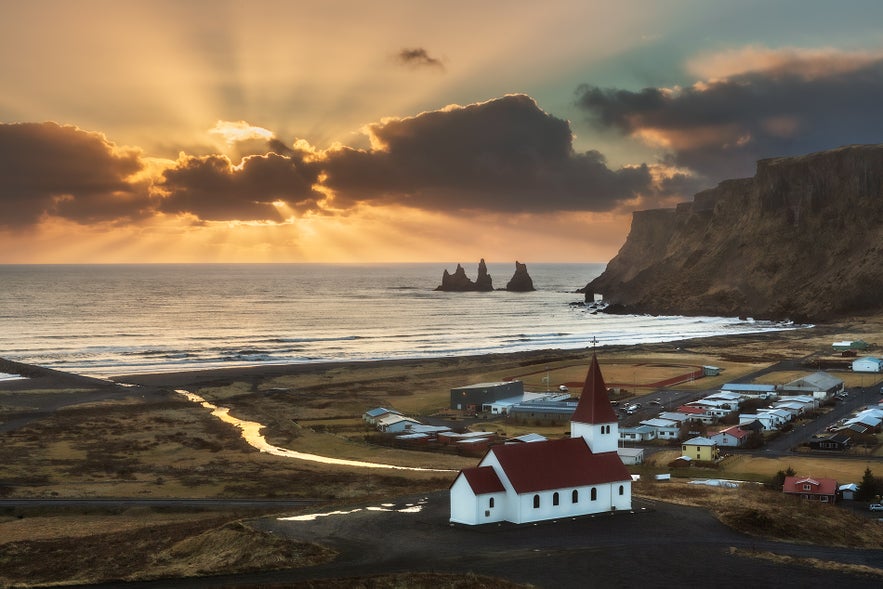 The charming village of Vik is a popular stop for travelers exploring the Iceland South Coast driving route. With a stunning backdrop of cliffs and ocean views, it’s a great place to rest, refuel, and explore local shops and restaurants. The iconic red-roofed church on the hill offers one of the best panoramic views of the area.
The charming village of Vik is a popular stop for travelers exploring the Iceland South Coast driving route. With a stunning backdrop of cliffs and ocean views, it’s a great place to rest, refuel, and explore local shops and restaurants. The iconic red-roofed church on the hill offers one of the best panoramic views of the area.
For ideas on how to make the most of your visit, check out the top things to do in Vik.
Fjadrargljufur Canyon
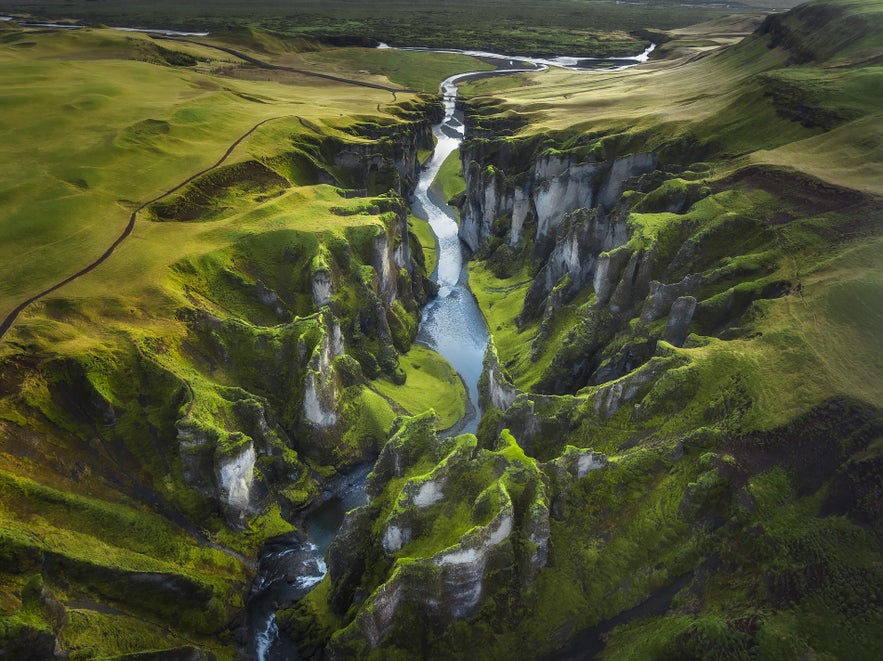 Carved by glacial meltwater over thousands of years, Fjadrargljufur is a deep canyon with steep cliffs and winding walking paths. The lush greenery surrounding the canyon contrasts beautifully with the rugged rock formations, making it a favorite photo spot for tourists in South Iceland. It’s located next to Kirkjubaejarklaustur, one of the main settlements in the region.
Carved by glacial meltwater over thousands of years, Fjadrargljufur is a deep canyon with steep cliffs and winding walking paths. The lush greenery surrounding the canyon contrasts beautifully with the rugged rock formations, making it a favorite photo spot for tourists in South Iceland. It’s located next to Kirkjubaejarklaustur, one of the main settlements in the region.
Skaftafell Nature Reserve
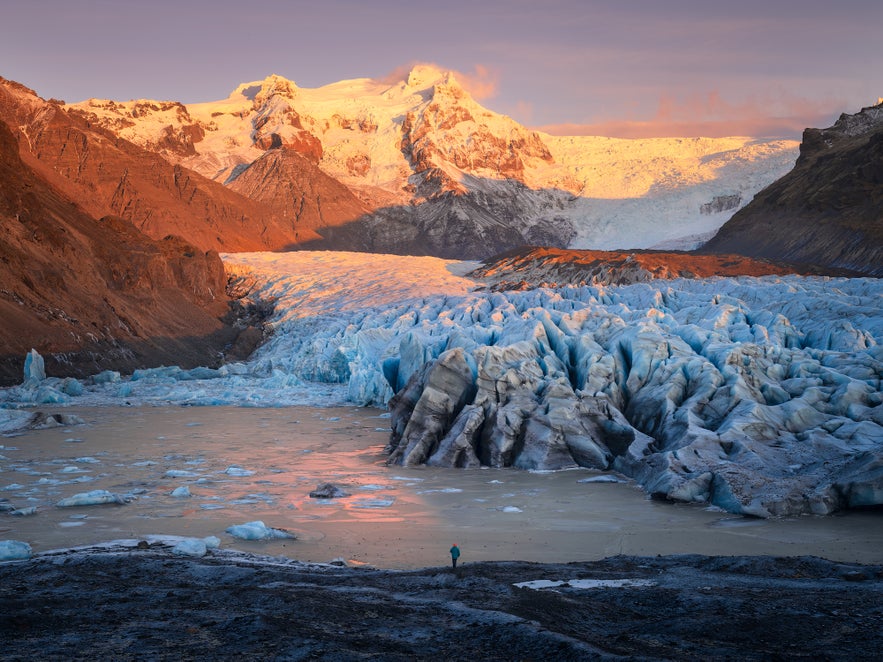 Located within Vatnajokull National Park, the Skaftafell Nature Reserve offers an extensive network of trails through waterfalls, glaciers, and volcanic landscapes. Trails lead to stunning glaciers, waterfalls like Svartifoss, and multiple viewpoints of the South Coast.
Located within Vatnajokull National Park, the Skaftafell Nature Reserve offers an extensive network of trails through waterfalls, glaciers, and volcanic landscapes. Trails lead to stunning glaciers, waterfalls like Svartifoss, and multiple viewpoints of the South Coast.
Jokulsarlon Glacier Lagoon & Diamond Beach
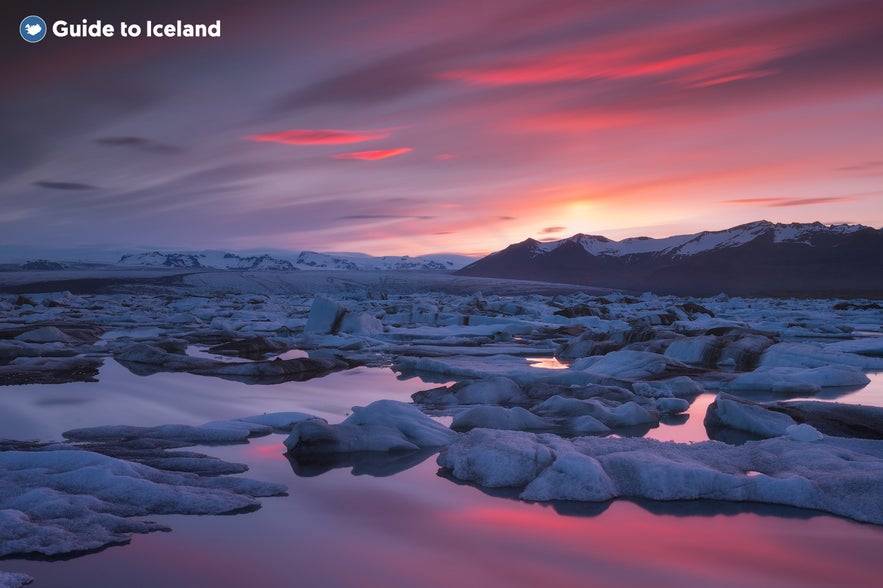
One of Iceland’s most famous natural wonders, the Jokulsarlon Glacier Lagoon, is where massive icebergs break off from the Breidamerkurjokull Glacier and float across a serene, icy lake. Just across the road, Diamond Beach showcases these icebergs as they wash ashore on the black sands, creating an otherworldly contrast of colors.
Take the Jokulsarlon Glacier Lagoon boat tour to get close to the action and witness towering icebergs as they drift through the glacial waters. If you're visiting in winter, you can also visit the stunning Vatnajokull glacier ice caves from the lagoon.
Vestrahorn Mountain & the Stokksnes Peninsula
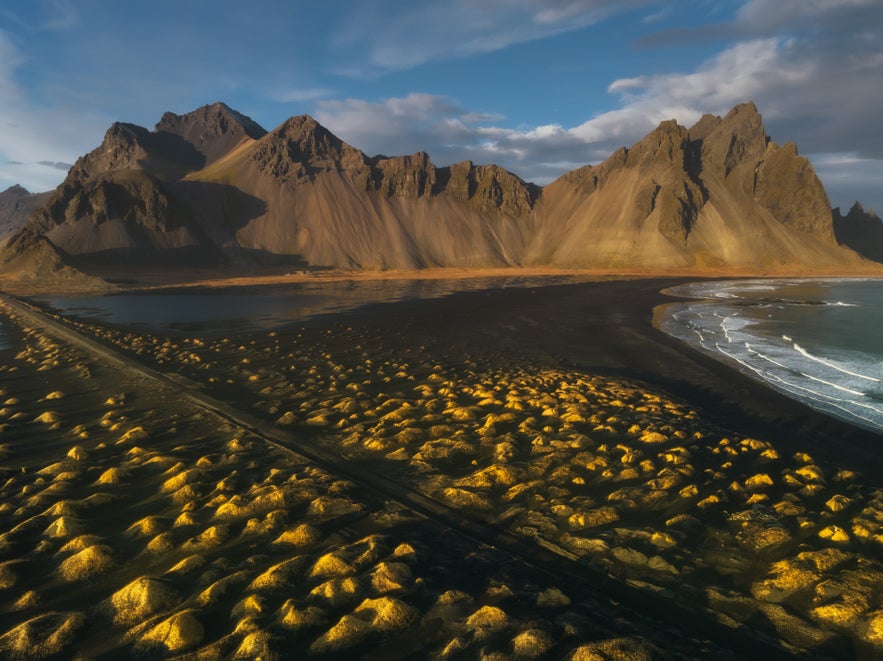
Mount Vestrahorn is one of Iceland’s most striking mountains, with jagged peaks rising from the black sands of the Stokksnes Peninsula. Often reflected in the shallow tidal pools below, it’s a favorite among photographers—especially during sunrise and sunset when the light paints the landscape in surreal colors.
Nearby, the fishing town of Hofn offers charm and a chance to sample Iceland’s delicious langoustine.
South Coast Geography, Nature, & Wildlife
 The South Coast is one of the most geologically diverse regions in Iceland, shaped by volcanic activity, glacial movement, and the relentless force of the Atlantic Ocean. Running along the Ring Road (Route 1), this area offers a mix of marshlands, black sand deserts, vast lava fields, and towering sea cliffs.
The South Coast is one of the most geologically diverse regions in Iceland, shaped by volcanic activity, glacial movement, and the relentless force of the Atlantic Ocean. Running along the Ring Road (Route 1), this area offers a mix of marshlands, black sand deserts, vast lava fields, and towering sea cliffs.
Volcanic Landscapes & Glacial Influence
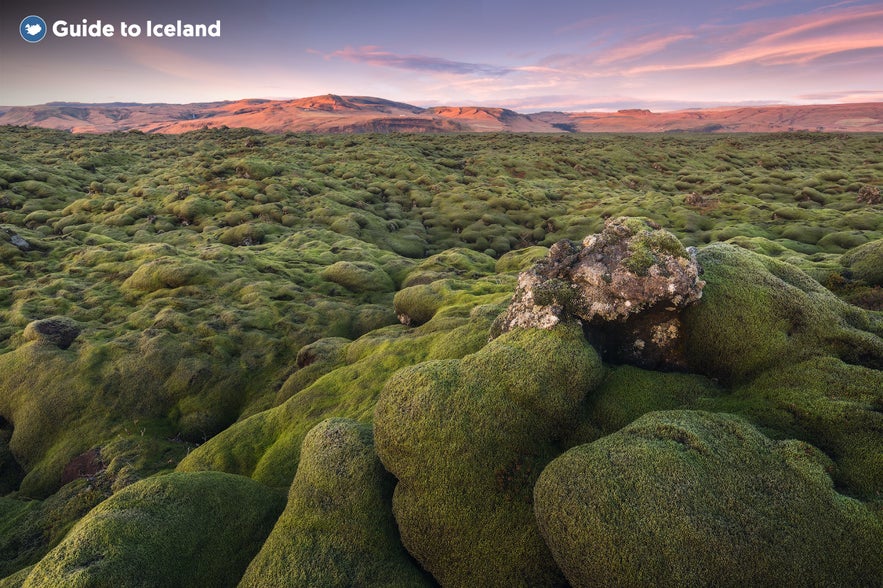 Beneath the surface, much of the South Coast is shaped by lava, such as the Eldhraun Lava Field, the largest lava flow in the world, stretching far along the coastline. Unlike the deep fjords of the Westfjords and East Iceland, the south shore of Iceland is relatively flat, as the lava rock helps shield the lowlands from the erosive power of the waves.
Beneath the surface, much of the South Coast is shaped by lava, such as the Eldhraun Lava Field, the largest lava flow in the world, stretching far along the coastline. Unlike the deep fjords of the Westfjords and East Iceland, the south shore of Iceland is relatively flat, as the lava rock helps shield the lowlands from the erosive power of the waves.
The region is also home to massive glaciers, including Vatnajokull, Europe’s largest ice cap, and Myrdalsjokull, which hides the powerful Katla Volcano beneath its ice. These glaciers fuel the many waterfalls in the area and create ever-changing landscapes through glacial floods and shifting ice formation.
Hot Springs & Geothermal Wonders
Thanks to Iceland’s geothermal activity, hot springs are scattered across the South Coast, providing natural bathing spots in incredible settings. While the Blue Lagoon near Keflavik is the most famous, travelers looking for a more intimate experience can seek out one of these more secluded geothermal pools:
-
Seljavallalaug — One of Iceland’s oldest man-made pools, nestled in a mountain valley near Skogar.
-
Reykjadalur (Valley of Steam) — A naturally warm river near Hveragerdi, where visitors can bathe while surrounded by geothermal steam vents.
-
Fontana Spa — A lakeside geothermal spa in Laugarvatn, featuring warm pools and steam rooms built over bubbling hot springs.
-
Secret Lagoon — A peaceful hot spring near Fludir, offering a more traditional and less commercial experience in a natural setting.
Wildlife Along the South Coast
The South Iceland coastline attracts diverse wildlife, making it a fantastic destination for birdwatchers and nature lovers. The towering cliffs of Dyrholaey and Reynisdrangar serve as nesting grounds for seabirds, including Arctic terns and the North Atlantic puffin, which can be spotted from May to August.
Seals are often seen lounging along the shores, especially near the Jokulsarlon Glacier Lagoon and Diamond Beach, while the waters off the coast are home to dolphins and various whale species. Keep an eye on the ocean, as you may spot a humpback whale breaching in the distance!
Outdoor Activities
The South Coast is an outdoor adventurer’s paradise. Popular activities include:
-
Horseback riding on Icelandic horses through black sand beaches and lava fields
-
Hiking in nature reserves like Skaftafell or to hidden gems like Fjadrargljufur Canyon
-
Glacier hiking and ice caving on Solheimajokull and Vatnajokull
-
Fishing and river rafting in the glacial rivers that wind through the region
-
Snorkeling and diving in nearby freshwater fissures like Silfra in Thingvellir National Park (though slightly off the South Coast driving route, it's a popular day-trip option)
Explore the South Coast Your Way
 Whether you prefer the freedom of a self-drive adventure or the ease of a guided tour, there are plenty of ways to experience the South Coast of Iceland. Drive at your own pace or join an expert-led tour for in-depth insights and a stressless journey.
Whether you prefer the freedom of a self-drive adventure or the ease of a guided tour, there are plenty of ways to experience the South Coast of Iceland. Drive at your own pace or join an expert-led tour for in-depth insights and a stressless journey.
Guided South Coast Day Tours
 For travelers who want to sit back and enjoy the views, guided day tours offer a hassle-free way to experience the South Coast’s top attractions. Led by knowledgeable local guides, these tours include transportation, storytelling, and stops at Iceland’s most iconic natural landmarks.
For travelers who want to sit back and enjoy the views, guided day tours offer a hassle-free way to experience the South Coast’s top attractions. Led by knowledgeable local guides, these tours include transportation, storytelling, and stops at Iceland’s most iconic natural landmarks.
-
South Coast of Iceland Tour From Reykjavik — Discover Iceland’s most iconic natural wonders on this guided day trip. See Skogafoss and Seljalandsfoss waterfalls, stroll along the black sands of Reynisfjara, and take in the stunning views of glaciers and volcanoes.
-
Relaxing South Coast Tour From Reykjavik to Solheimajokull Glacier — Experience the beauty of Iceland’s South Coast with this small-group tour. Explore waterfalls, dramatic beaches, and, if you choose, add a glacier walk for an unforgettable adventure.
-
2-Day South Coast Winter Trip to Jokulsarlon Glacier Lagoon Crystal Ice Cave — Journey deep into South Iceland on this two-day guided tour. Visit the Jokulsarlon Glacier Lagoon, explore an ethereal blue ice cave, and witness waterfalls and lava landscapes.
Self-Drive Tours
For those who love the freedom of the open road, self-drive tours provide a flexible way to explore Iceland’s South Coast. These pre-planned itineraries combine convenience with independence, giving you the tools to discover hidden gems and famous landmarks at your own pace.
-
6-Day Northern Lights Self-Drive Tour in the South Coast of Iceland With Ice Caving — Chase the northern lights, walk on a glacier, and unwind in geothermal hot springs with a pre-planned itinerary and a comfortable rental car.
-
1-week Summer Self-Drive Tour of the Ring Road of Iceland & Golden Circle — Embark on the ultimate Icelandic road trip, taking you around the entire country. Witness powerful waterfalls, black sand beaches, geothermal wonders, and the stunning glacier lagoons of Vatnajokull National Park.
-
5-Day Self-Drive Tour of South Iceland With the Golden Circle and Blue Lagoon — Discover Iceland’s most iconic sights, combining the famous Golden Circle with the stunning South Coast of Iceland. Visit geysers, powerful waterfalls, black sand beaches, and the Jokulsarlon Glacier Lagoon at your own pace.
South Coast Tours & Activities
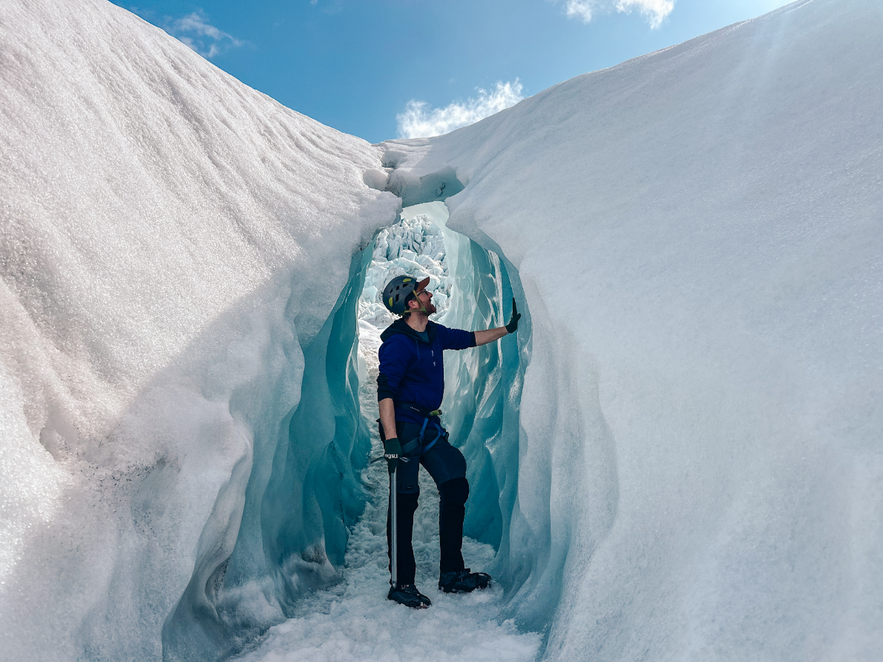 Enhance your trip with unique activities that bring you closer to Iceland’s natural beauty. From glacier hikes to lava tunnels and horseback riding on black sand beaches, these South Coast experiences offer a thrilling way to connect with Iceland’s dramatic landscape.
Enhance your trip with unique activities that bring you closer to Iceland’s natural beauty. From glacier hikes to lava tunnels and horseback riding on black sand beaches, these South Coast experiences offer a thrilling way to connect with Iceland’s dramatic landscape.
-
Crystal Blue Ice Cave Tour in Vatnajokull Glacier — Step inside the shimmering blue world of Iceland’s largest glacier on this unforgettable ice cave tour in Vatnajokull.
-
Raufarholshellir Lava Tunnel Tour From Reykjavik — Explore a fascinating underground lava tube formed by a volcanic eruption over 5,000 years ago, just a short drive from Reykjavik.
-
Horse Riding Tour on the Black Sand Beach From Vik — Experience Iceland’s stunning South Coast from a unique perspective on this horseback riding tour along an iconic black sand beach.
-
Katla Ice Cave Tour — Departing from Jokulsarlon, this express tour takes you directly to a natural ice cave in Vatnajokull Glacier for a quick yet awe-inspiring experience.
-
Skaftafell Glacier Hiking Tour — Join expert guides in Skaftafell for a thrilling hike across one of Iceland’s most accessible outlet glaciers, with views of jagged ice formations and sweeping mountain landscapes.
Frequently Asked Questions About the South Coast
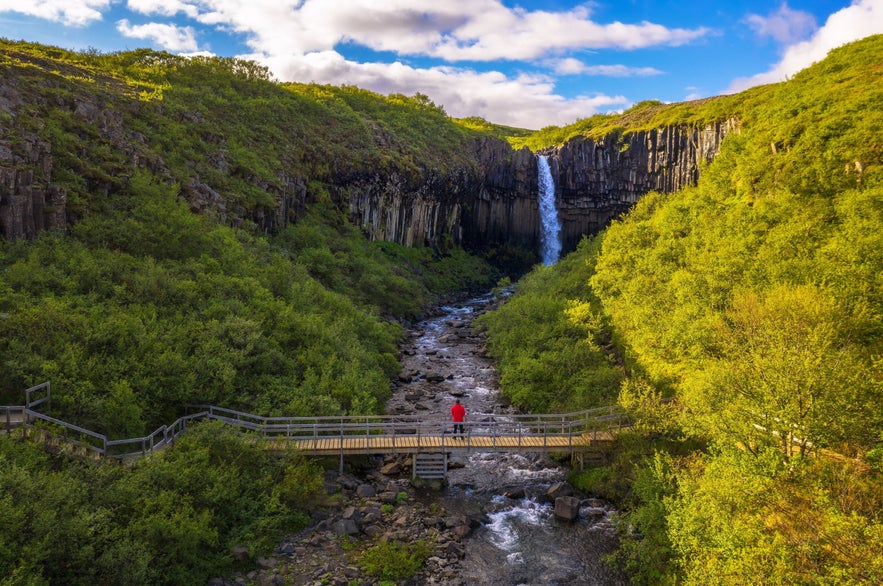 Have questions about visiting Iceland’s South Coast? Here are some helpful answers to make your trip easier.
Have questions about visiting Iceland’s South Coast? Here are some helpful answers to make your trip easier.
How long does it take to drive the South Coast of Iceland?
The drive from Reykjavik to the farthest major attraction on the South Coast, the Jokulsarlon Glacier Lagoon, takes about 4.5 to 5 hours one way. However, with all the incredible stops along the way, most travelers take at least two days to explore the region.
Can you visit the South Coast as a day trip from Reykjavik?
Yes. Many guided tours cover the highlights of the South Coast in a day, including Seljalandsfoss, Skogafoss, Reynisfjara Black Sand Beach, and Vik. However, if you want to visit the Jokulsarlon Glacier Lagoon and Diamond Beach, an overnight stay is recommended.
What is the best time of year to visit the South Coast?
The South Coast is beautiful year-round. Summer (June-August) offers long daylight hours and milder weather, while winter (November-March) provides stunning snowy landscapes, northern lights opportunities, and ice cave tours. Spring and fall bring fewer crowds and a mix of seasonal highlights.
Are South Coast roads safe to drive in winter?
Yes, but conditions can be unpredictable. The Ring Road is generally well-maintained, but snow, ice, and strong winds can make driving tricky. A 4x4 rental is recommended, and it is essential to check the Icelandic Road Administration for updates.
Can you see the northern lights on the South Coast?
The South Coast is a great place to see the northern lights in winter, especially in remote areas away from city lights. Jokulsarlon and Vik are popular spots for aurora sightings.
Are there any hot springs on the South Coast?
Yes. While the Blue Lagoon is near Reykjavik, you can find geothermal pools along the South Coast, such as Seljavallalaug (a scenic, historic pool) and Reykjadalur Hot Spring River (a warm, naturally heated river near Hveragerdi).
Are there any off-the-beaten-path stops worth visiting on the way to the South Coast?
Absolutely. While the major highlights steal the spotlight, there are several lesser-known stops that offer unique experiences along the way:
-
Hellisheidi and Nesjavellir Geothermal Power Plants — Just outside Reykjavik, these sites offer a fascinating look into Iceland’s renewable energy systems. Stop by the Hellisheidi Geothermal Exhibition to learn how the country taps into volcanic heat to power its homes.
-
Raufarholshellir Lava Tunnel — Located about 30 minutes from Reykjavik, this massive lava tube lets you walk through a frozen-in-time lava flow from an eruption over 5,000 years ago. Guided tours are available year-round.
-
Kerid Crater Lake — Just off the Golden Circle route, this vibrant volcanic crater is a great photo stop with a short walking path around its rim. The deep red rock contrasts beautifully with the turquoise water.
-
Urridafoss Waterfall — Often overlooked, this wide and powerful waterfall is located just a short detour off Route 1 before Selfoss. It’s one of the largest by volume in Iceland and rarely crowded.
-
Keldur Turf Houses — For a glimpse into Icelandic history, visit Keldur, one of the country’s oldest preserved turf house settlements. It's located between Hella and Hvolsvollur and gives a sense of what rural Icelandic life was like centuries ago.
These quieter stops can help break up your drive and offer a deeper look at Iceland’s geological and cultural landscape.
Get Ready To Explore Iceland’s South Coast
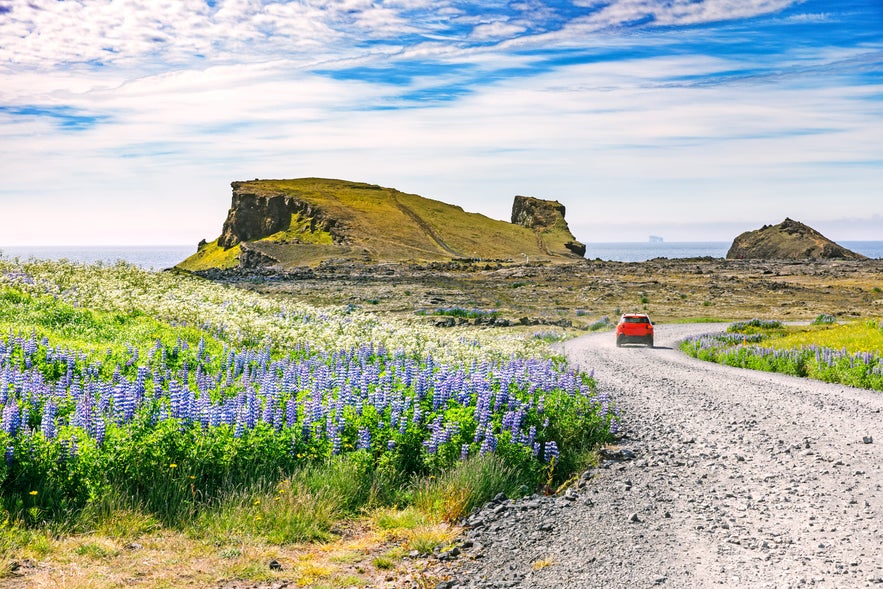 The South Coast of Iceland is a must-see region, offering everything from jaw-dropping waterfalls to stunning glaciers and iconic black sand beaches. Whether cruising along the coast on your own or joining a guided tour, there's something magical around every corner.
The South Coast of Iceland is a must-see region, offering everything from jaw-dropping waterfalls to stunning glaciers and iconic black sand beaches. Whether cruising along the coast on your own or joining a guided tour, there's something magical around every corner.
With its year-round accessibility, diverse natural wonders, and endless photo-worthy stops, the South Coast is perfect for both first-time visitors and returning travelers. From glacier hikes and ice cave tours to cozy villages and geothermal pools, this unforgettable stretch of Iceland has it all. Start planning your trip today—your South Coast adventure is waiting.

